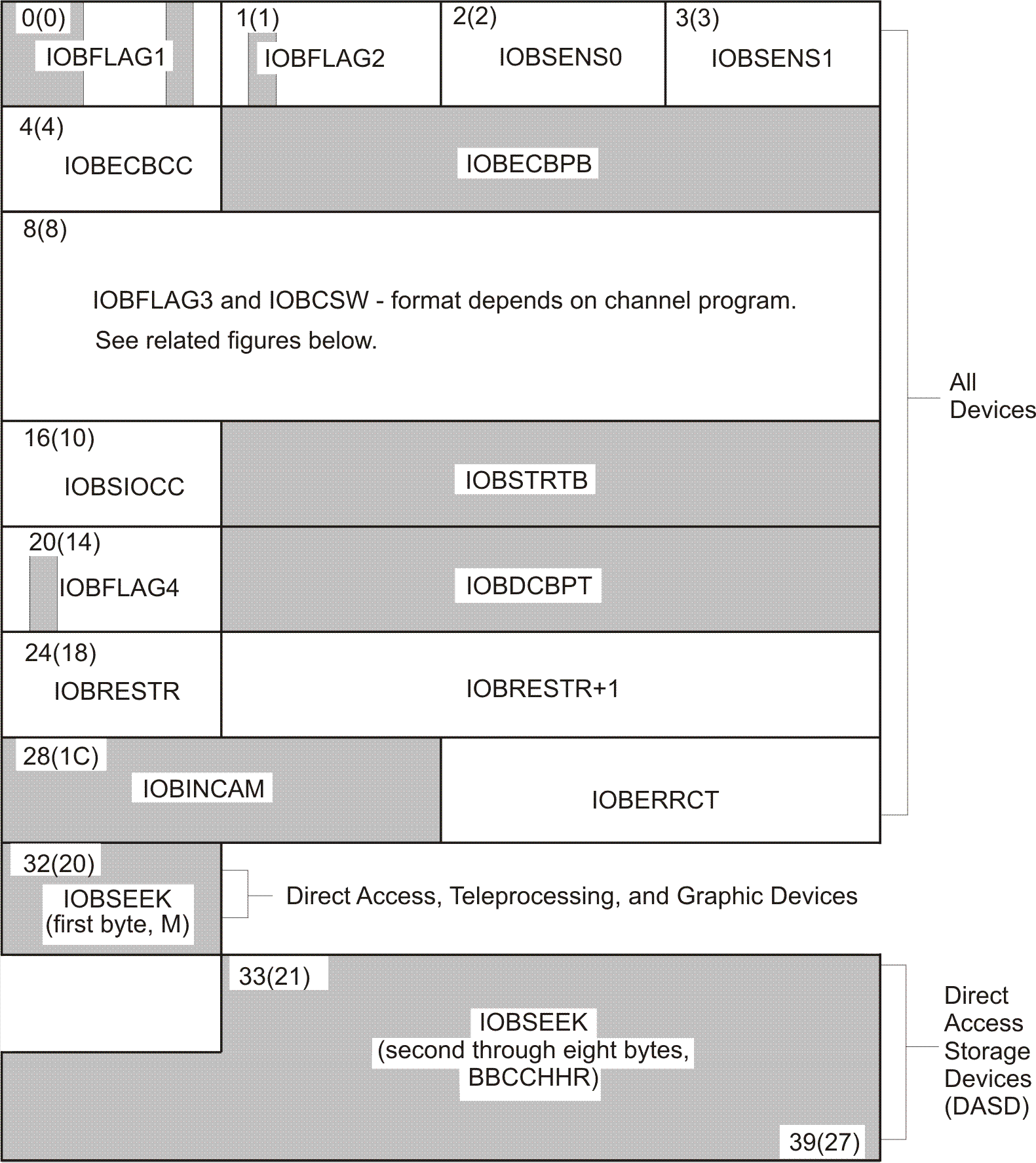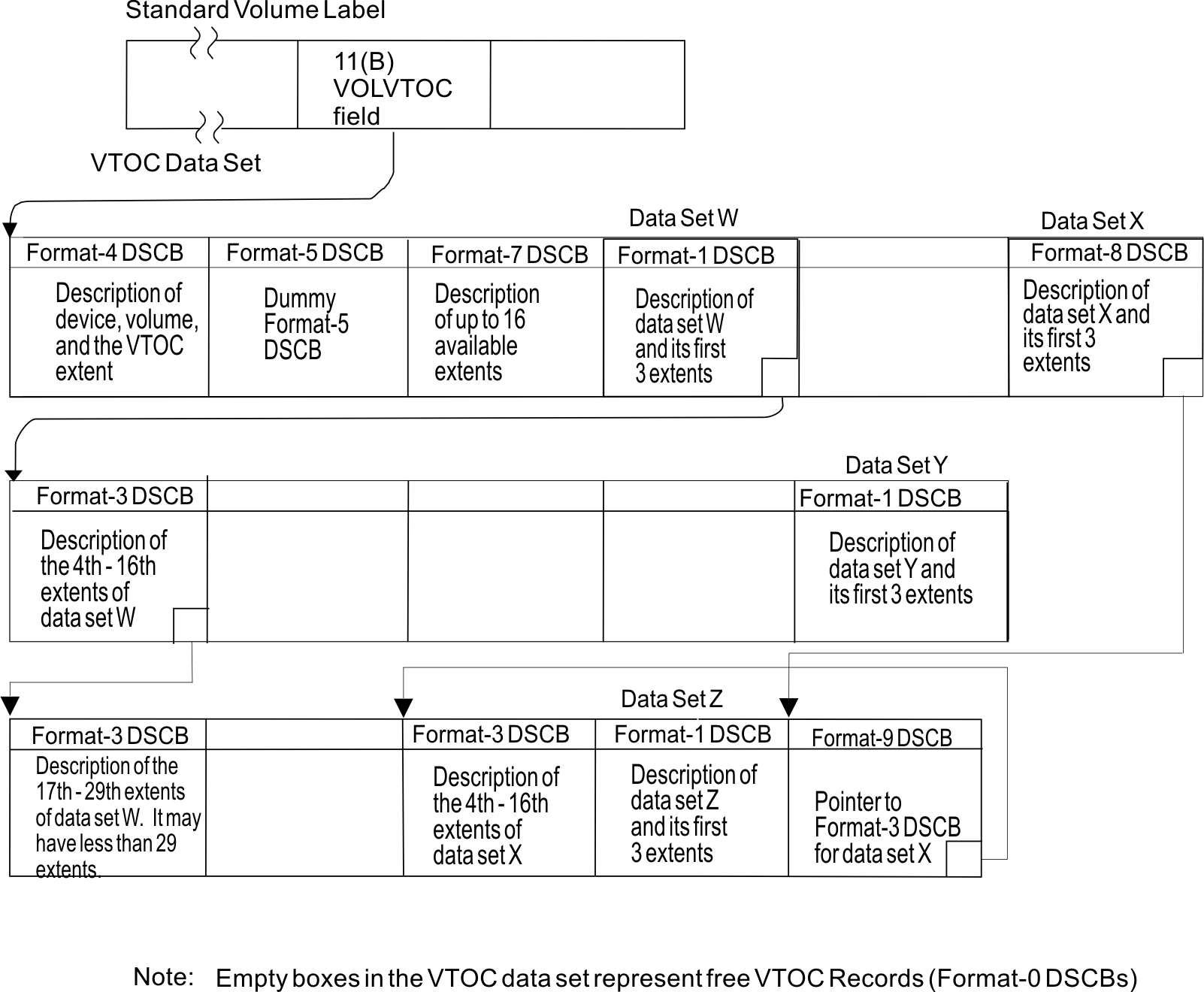 z/OS DFSMSdfp Advanced Services
z/OS DFSMSdfp Advanced Services
 z/OS DFSMSdfp Advanced Services
z/OS DFSMSdfp Advanced Services
|
Previous topic |
Next topic |
Contents |
Contact z/OS |
Library |
PDF
Data Set Control Block (DSCB) Types z/OS DFSMSdfp Advanced Services SC23-6861-01 |
|
|
The VTOC contains several kinds of DSCBs. This section describes what the DSCBs are used for, how many exist on a volume, and how to locate them. The DSCB layouts are shown in Table 1 through Table 1. The first record in every VTOC is the VTOC DSCB (format-4). The record describes the device the volume resides on, the volume attributes, and the size and contents of the VTOC data set. The next DSCB in the VTOC data set is a free-space DSCB (format-5) even if the free space is described by format-7 DSCBs. The third and subsequent DSCBs in the VTOC can occur in any order. One or more DSCBs in the VTOC define a data set on each volume on which the data set resides. The number of DSCBs needed to define a data set is determined by the number of extents that the data set occupies and by whether it has a format 9 DSCB. One or more format-3 DSCBs are required for data sets with more than three extents. Figure 1 shows a VTOC and the DSCBs needed to define four data sets. Data set A (in Figure 1) has 29 extents, so it cannot be a basic format, direct or partitioned (PDS) data set. Because it has so many extents, it requires a format-1 DSCB and two format-3 DSCBs. Data set B has 16 extents and therefore requires both a format-1 and a format-3 DSCB. Data sets C and D have three or fewer extents and need only a format-1 DSCB. Data sets B, C, and D could be any type of data set. Figure 1. Contents of VTOC
- DSCBs Describing Data Sets on Volume That Has No VTOC Index
 Figure 2 shows a VTOC and the DSCBs needed to define four data sets on an extended address volume. Data set W (in Figure 2) has 29 extents, so it cannot be a basic format, direct or partitioned (PDS) data set. Because it has so many extents, it requires a format-1 DSCB and two format-3 DSCBs. Data set X has 16 extents and since it is an EAS eligible data set it requires a format-8 and a format 9-DSCB, plus an additional format-3 DSCB. Data sets Y and Z have three or fewer extents and need only a format-1 DSCB. Data sets X, Y, and Z could be any type of data set. Figure 2. Contents of VTOC
on an extended address volume - DSCBs Describing Data Sets on Volume
That Has No VTOC Index
 The mapping macro for the
format-1, format-2, format-3, format-4, format-5, format-8,
and format-9 DSCBs is IECSDSL1. Code positional parameters to
specify which formats of DSCB to map. For example, the following
maps format-1 and format-3:
The macro does not generate a DSECT statement. This makes it easier
to embed it in your own DSECT or CSECT. You can use a technique such
as the following to get separate DSECT statements:
The first symbol generated for each format is of the form IECSDSLn, where n is the number of the format. 


|
 Copyright IBM Corporation 1990, 2014 Copyright IBM Corporation 1990, 2014 |